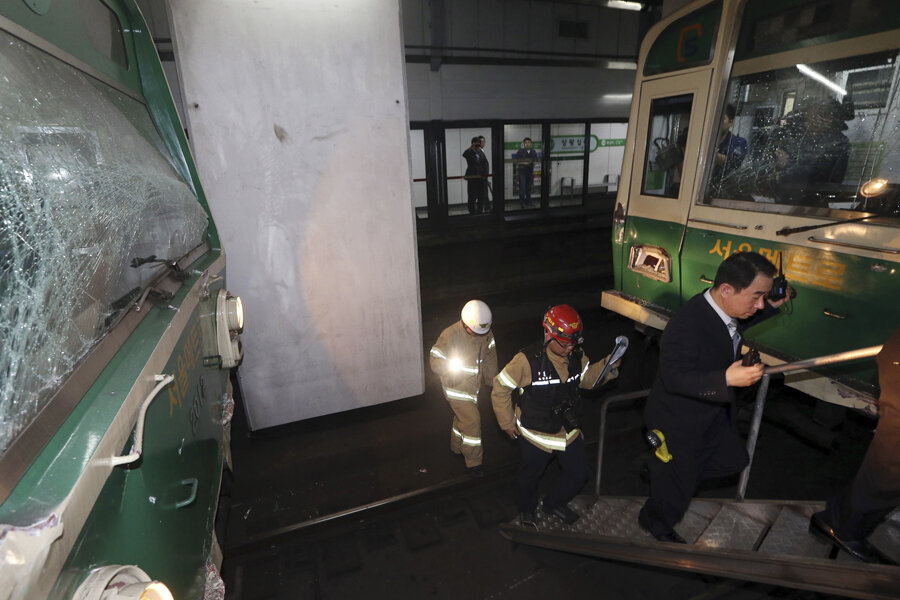Seoul subway crash leaves scores injured
Loading...
A subway train plowed into the back of another train at a station in South Korea's capital on Friday, injuring about 200 people, including about 150 who were hospitalized with bruises and other mostly minor injuries, officials said.
Local media reported there were long delays in providing instructions to passengers about what to do. That struck a nerve in South Korea, where the captain in an April 16 ferry sinking that killed hundreds of people has been condemned for waiting 30 minutes to issue an evacuation order as the ship sank.
A preliminary investigation suggested the train's automatic distance control system may have malfunctioned, subway officials said.
The driver of the moving train told officials that he applied the emergency brake after noticing a stop signal but wasn't able to halt in time, Seoul Metro official Jeong Su-young told a briefing.
Fire officer Kim Kyung-su said emergency officials arrived at the scene about two to three minutes after a passenger informed them of the accident.
Kim said about 200 people received relatively minor injuries except for two who suffered fractures and serious bruises. He said about 150 people remained hospitalized.
Several hospitals said none of their patients were seriously hurt. Hanyang University Medical Center said it treated 36 subway passengers for minor external injuries.
Lee Dong-hyun, a passenger on the incoming train, described a chaotic scene after the crash. "It stopped suddenly ... and everyone screamed," he said. Lee said the door leading to the next car was crushed and couldn't be opened.
The accident comes as South Koreans are criticizing the government for lax safety practices that many feel contributed to the sinking of the ferry Sewol, which left more than 300 people, mostly high school students, dead or missing.
The subway accident received extensive media coverage and was the top news on television and social media sites.
"I was so surprised and wasn't sure what to do," said Lim Seong-eun, 26, who commutes by subway every day.
Lim said her mother called her to tell her about the accident and ask if she was on the train.
"It's been less than one month since the Sewol disaster and I'm a little anxious that an accident like this happened in a place used by lots of people," Lim said.







